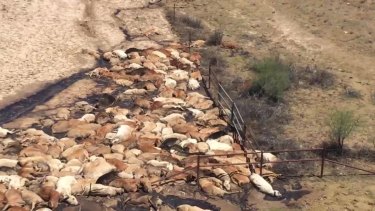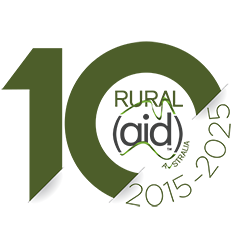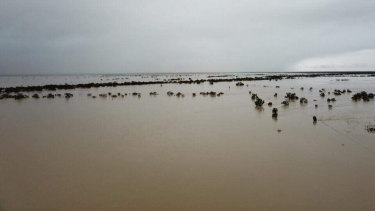Flood-hit farmers now hoping for more rain as recovery continues
Queensland farmers devastated after massive flooding hit northern parts of the state last month now find themselves in the bizarre position of wishing for more rain.
Much of the flooded areas were drought declared before the floods, and despite the deluge went right back to that state after the water receded.

Heidi Smith lives with her husband and four children on Iffley Station, a cattle station between Normanton and Julia Creek.
She said there had been a significant impact on the landscape from the flooding.Advertisement
“There’s a lot of erosion and a lot of sand. Once (the water) has been up for two or three days it actually starts to move a lot of sand around,” Ms Smith said.
“It’s literally like a beach. It’s thick, a couple of feet. We’ve got to move it, and then vehicles get bogged in it.”
Ms Smith said as a result of the erosion, a lot of the topsoil had been stripped from paddocks, meaning native grasses would take a long time to regrow.
That means despite recently getting too much water, the Smiths – along with most of their neighbours – will be spending the next few weeks hoping for rain.
“We will have a very tough season if we don’t get a couple more inches to wash everything off,” she said.
“Because feed in our experience after a flood, it doesn’t really come back. It tends to just lie there and it needs the extra rain to bring it back in.”
“Ideally we’d love some more rain. We’ve had some fodder drops but it won’t last all year so we need some rain now.”
Iffley Station was more fortunate than many of its neighbours thanks to large elevated sections where the bulk of its 30,000 cattle survived the event.
Many surrounding properties and others across the region were not so lucky, with half-a-million cattle believed to have died in the disaster from drowning, freezing or starvation.
Some properties lost almost their entire herds, which means simple drops of hay aren’t enough to help them.
Regional assistance group Rural Aid launched the Buy a Cow campaign, urging people to donate specifically towards restocking cattle stations.
Rural Aid chief executive Charles Alder said they had previously been running a “Buy a Bale” campaign to fund hay drops but that was no longer enough.
“We’ve got a target of $7.5 million,” Mr Alder said.
“It’s also the flow-on effect to the local communities. Every one of these farmers spend money in town. The trucking companies truck cattle in and out. The local servos sell diesel. The shops sell groceries and these farmers have no cash flow.”
Rural Aid has a list of registered affected farmers and every time $15,000 builds up it is donated to the next farmer on the list to help them with the coast of restocking.
It comes on top of state and federal disaster assistance payments, as well as a new agency set up by the federal government on Friday to help manage the response to the disaster.
The North Queensland Livestock Recovery Agency will develop medium- and long-term plans to rebuild the sector and help to manage restocking efforts.
Farmers will be able to access up to $2 billion in low-cost loans, as well as access further seed money to rebuild their herds.
Heidi Smith said she was grateful of any help they could get.
“We have these extremes (of weather) that we have absolutely no control over,” she said.
“Sometimes I think people in the city must think we’re so ungrateful, calling for rain after we’ve just had so much, but that’s what we need right now.”
Source: The Sydney Morning Herald

